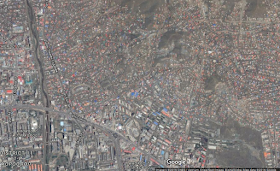Korean broadcasters perfectly wrapped up their coverage of the Rio Olympics by masking the parade of world athletes with the portraits of national competitors they already aired 99% of the time during the whole competition - I actually switched from MBC to SBS because there, that patriotic display filled less than half the screen:
 |
| Even when other nations are on screen at Rio 2016, Korea broadcasters manage to show national athletes (20160822 - twitter.com/theseoulvillage/status/767507917016698881) |
In case you missed the Rio games and the previous editions, here's how it works:
- all major broadcasters sharing the same rights for the games, the competition among them is all about populism and fueling national fervor
- if a national champion is competing, major broadcasters must also air them live on their dedicated sports channel (and when it's PARK In-bee, throw in that dedicated golf channel for good measure) - when that's a second rate athlete, use the sport channel to rerun the exploits of top tier stars.
- on the last day, when there's 0% chance of medal, start one hour later and replay past medal bouts
- otherwise, may be aired live only universal legends in the very exclusive Usain BOLT - Michael PHELPS league (two more games required for Simone BILES, and Team USA B stood no chance with none of that 1992-dream-team material) - these legends are part of the comfort zone, their presence providing both the 'international' label, and the 'sport domination' alibi
- success basically always relies on the same sports - difficult to grow new vocations without 'training' the audience with a decent pedagogy of Olympic diversity...
Aaah, Tokyo 2020! Different flavor of ultranationalism there. Today, the Olympic flag was handed to Nippon Kaigi darlings Yuriko Koike (the newly elected governor), and Shinzo Abe, who popped up dressed as Super Mario:
Super Tojo ready for Tojo 2020 - let the Nippon Kaigi games begin!
 |
| BREAKING - Shinzo Abe unveils new logo for Tokyo 2020 (Hideki Tojo 2020) (20150911 - twitter.com/theseoulvillage/status/642228805260570624) |
Seoul Village 2016
Welcome to our Korean Errlines! Follow Seoul Village on Facebook and Twitter
Add this page to your favorites
.







